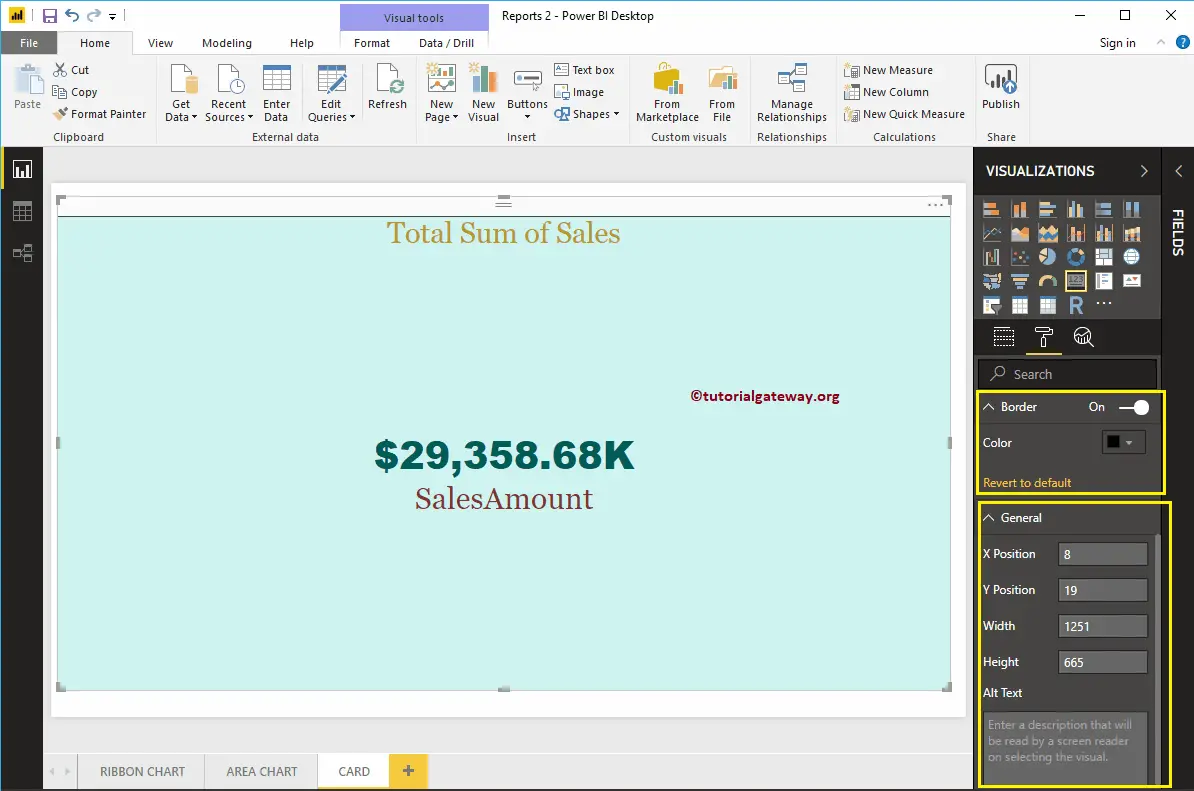Let me show you how to Create a Card in Power BI with an example. Power BI Card is useful to display a single number (or metric value). For example, If we want to track the total orders, total sales value, or total quotations we sent, then we can use this Power BI Card visualization.
For this Power BI Card demo, we are going to use the SQL Data Source that we created in our previous article. So, Please refer to Connect Power BI to SQL Server article to understand the Power BI Data Source.
How to Create a Card in Power BI
Drag and Drop the Sales Amount from Fields section to Canvas automatically create a Column Chart, as shown in the below screenshot.
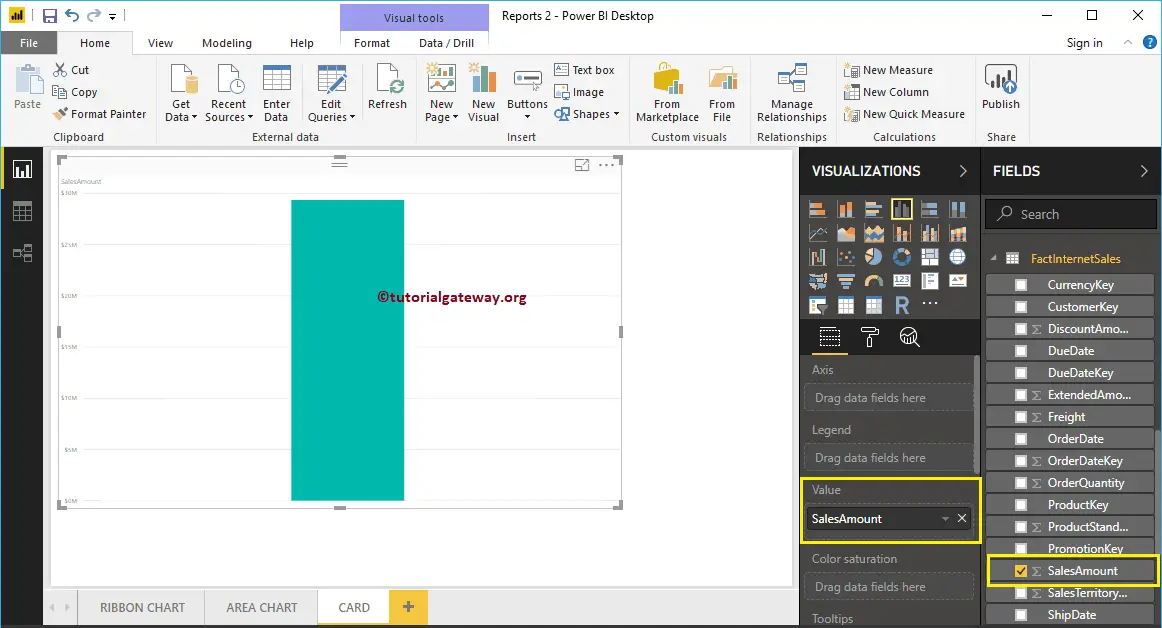
Click on the Card under the Visualization section. It automatically converts the Column Chart into a Card. From the screenshot below, you can see the Card that shows the Total Sales Amount.
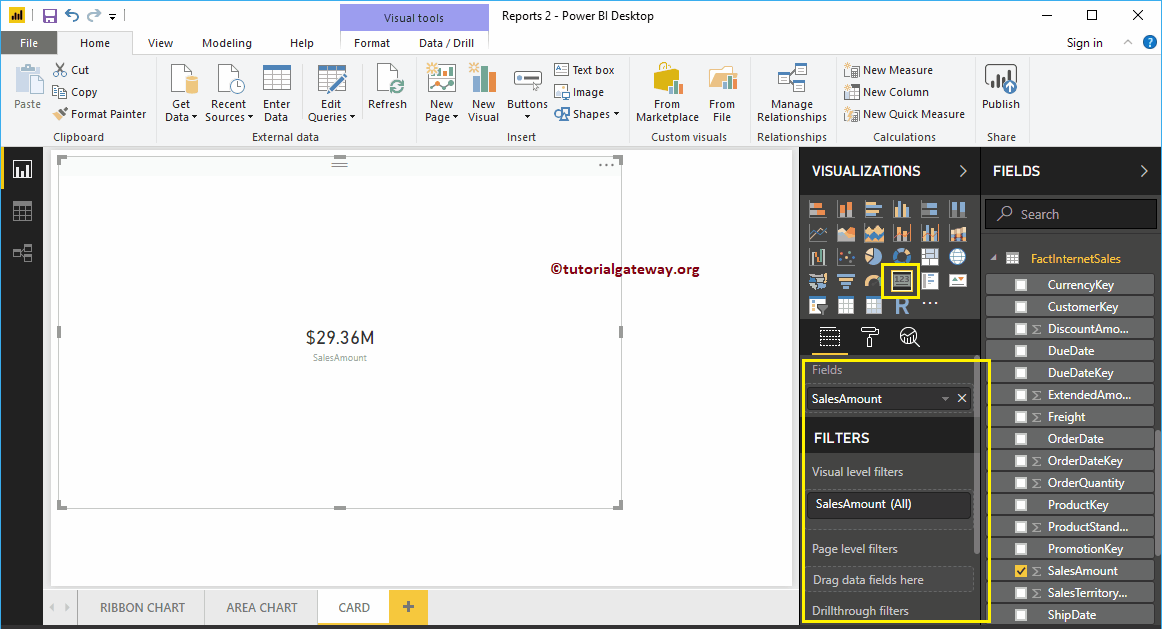
Create a Card in Power BI Approach 2
In order to create a Power BI card, first, click on the Card present in the Visualization section. It will create a Card with dummy data, as we have shown in the below screenshot.
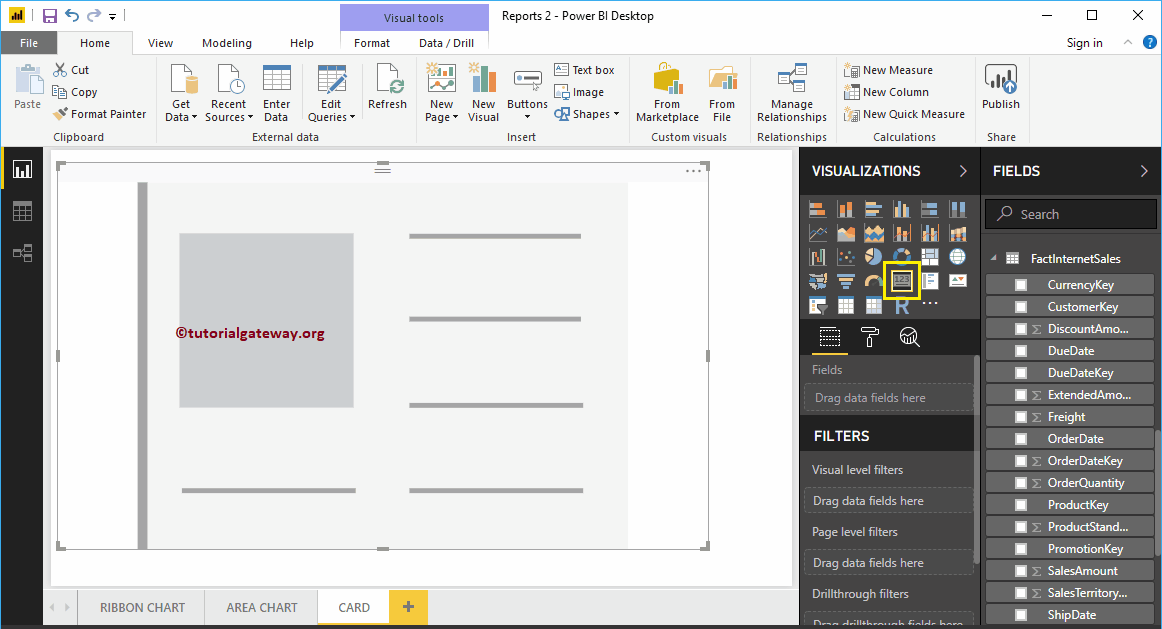
Let me drag the English Country Region Name (Dimension data) into the Fields section. As you can see, it shows the First Country Name as the Card value.
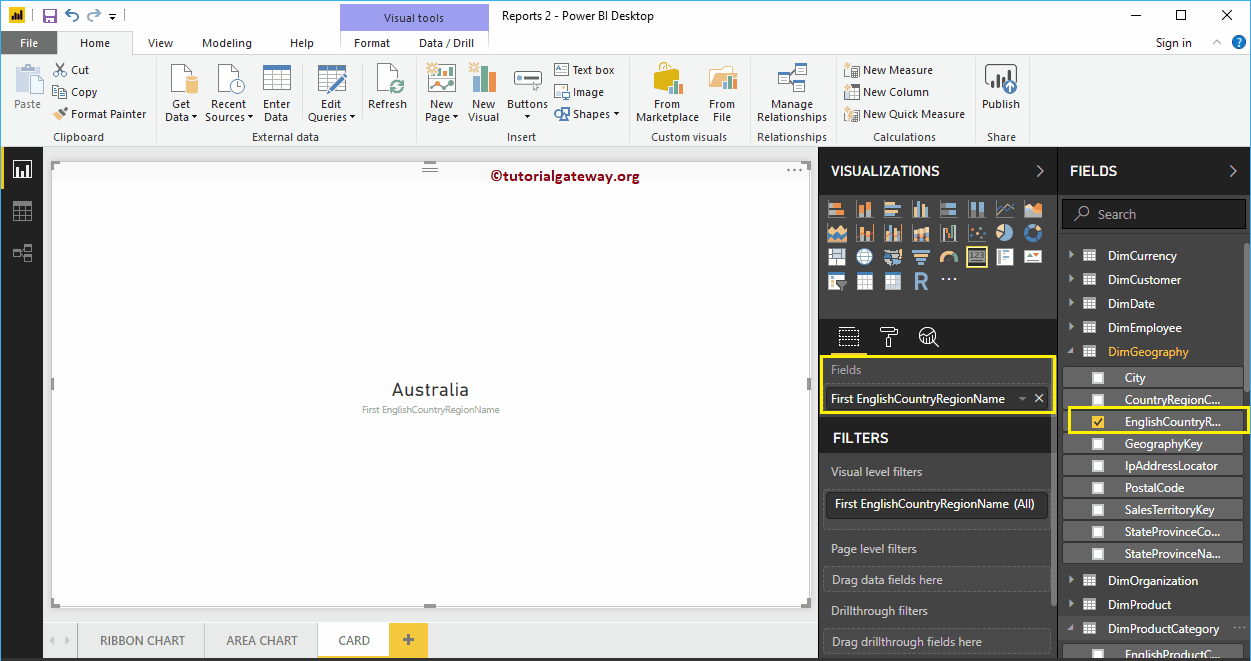
You can change the First function to any other Power BI supporting function.
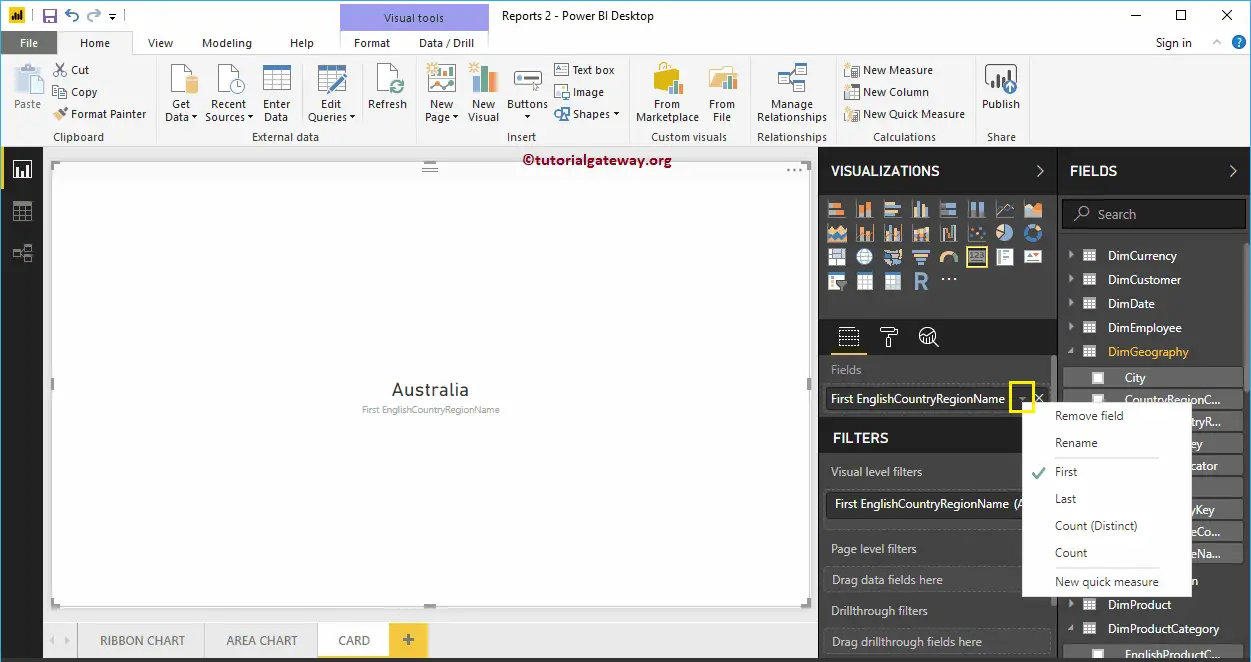
Next, let me remove the Country Name and add Sales Amount to the Fields section.
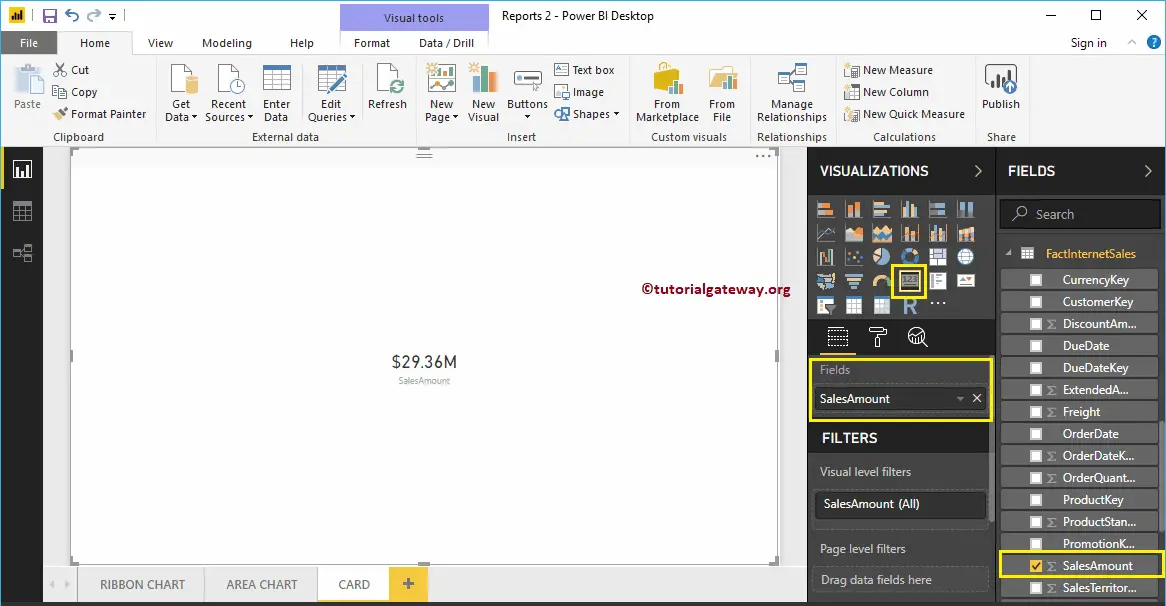
By default, it uses the default aggregated function called SUM. But, you can change this aggregate function as per your company requirement.
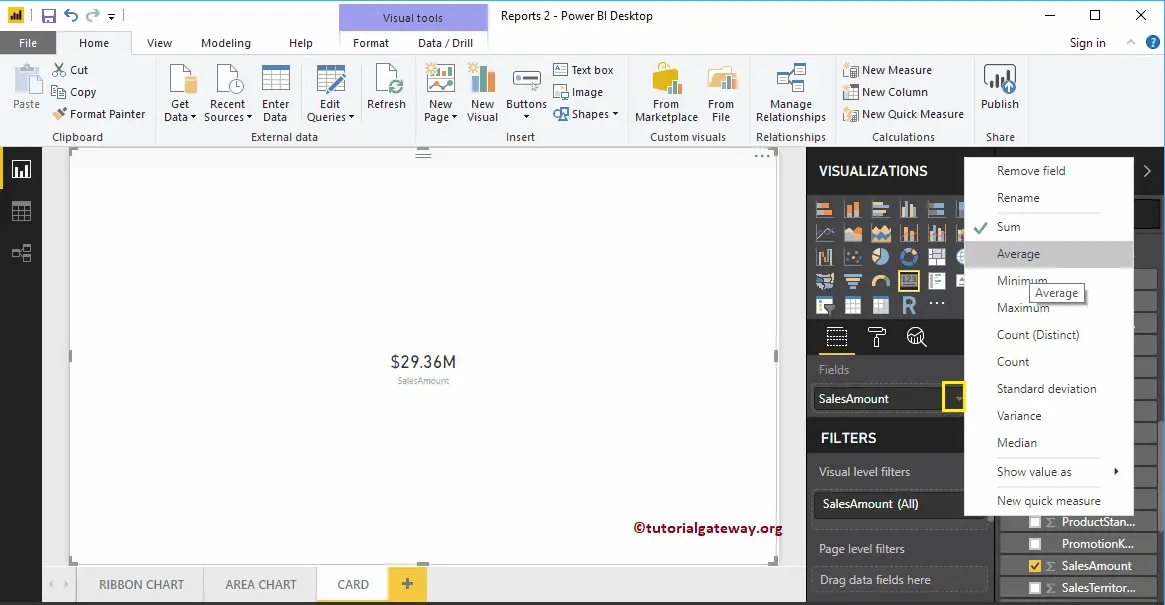
Let me do some quick formatting to this Card.
NOTE: I suggest you refer to Format Card article to understand the available formatting options.
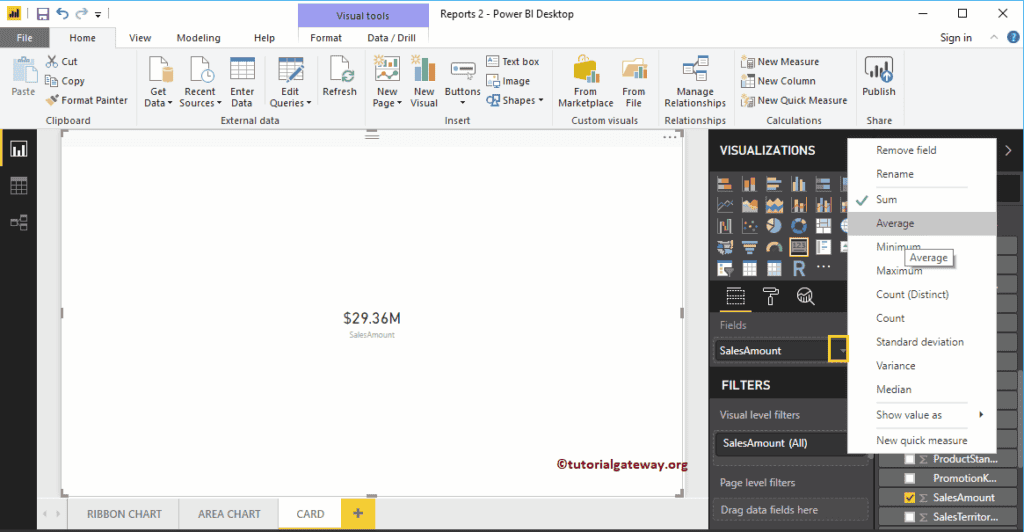
How to Format Power BI Card with an example?. Formatting Power BI Card includes changing the category Label Colors, enabling Card Title, background colors, etc.
To demonstrate the Card formatting options, we are going to use the Card that we created earlier. Please refer to Card in Power BI article to understand the steps involved in creating a Power BI Card.
How to Format Power BI Card
Please click on the Format button to see the list of formatting options that are available for this Card.
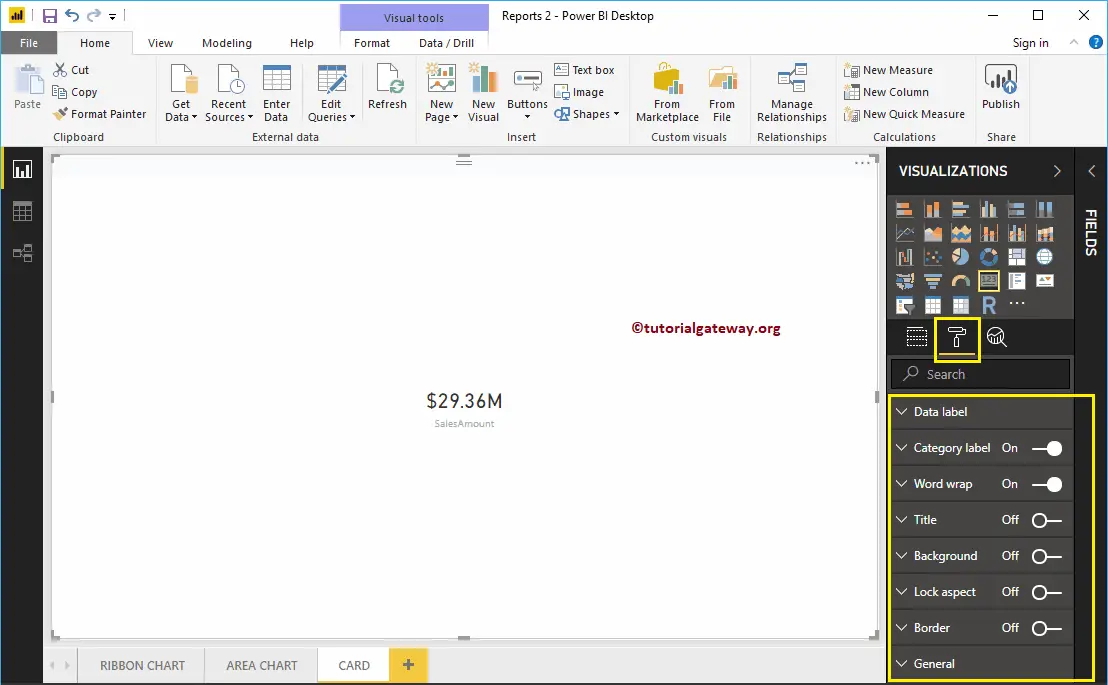
Format Data Label of a Card in Power BI
Data Label is the numeric value (Sales Amount, Total Product Cost, etc.) that is displayed by the card. As you can see from the below screenshot, we changed the Color to Green, Display Units to Thousands, text Size to 40, and Font Family to Arial Black.
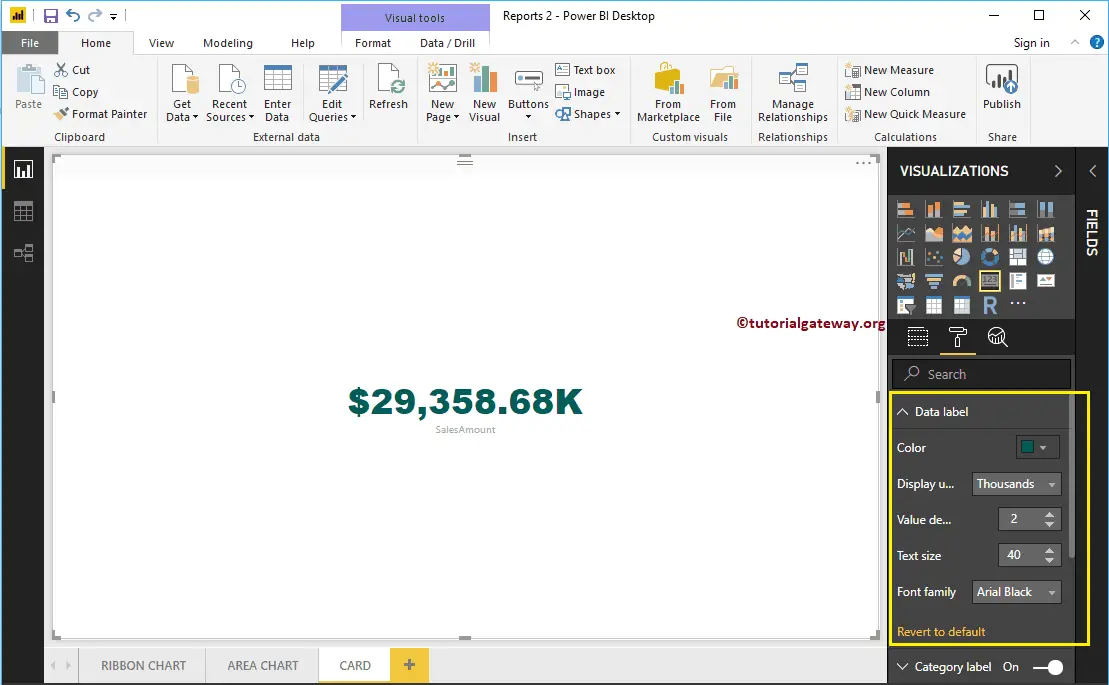
Format Category Label of a Card
Category Label means Columns Name that we used in the Card. From the screenshot below, you can see, we change the Color to Brick Red, Font Family to Georgia, and Text Size to 35.
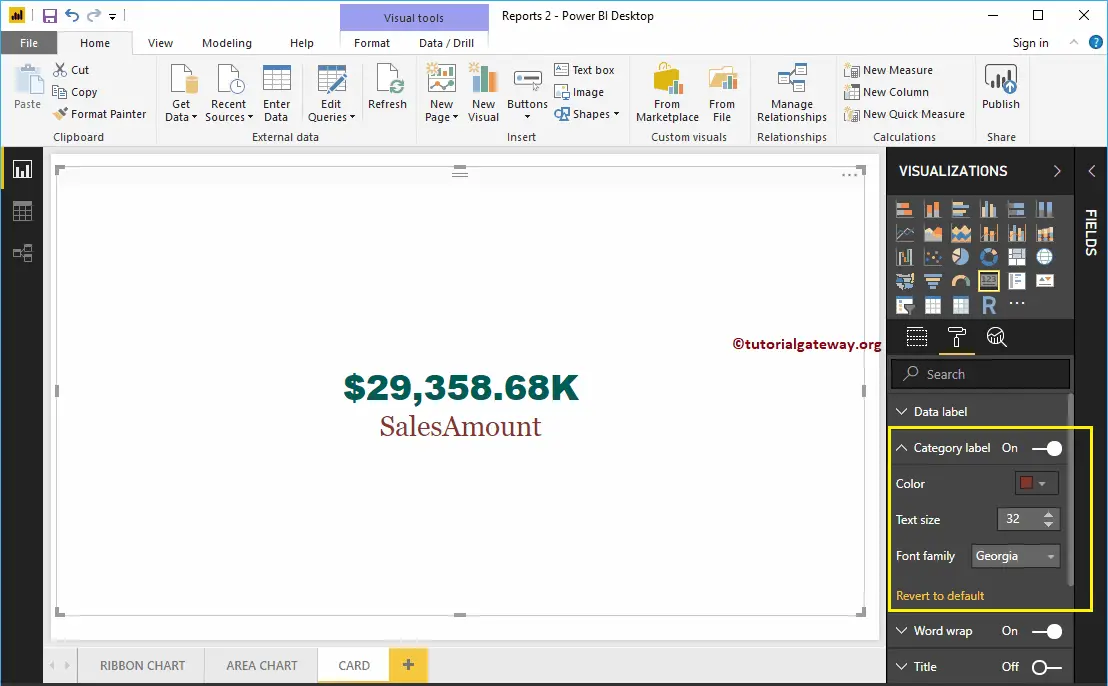
Format Power BI Card Title
By toggling the Title option from Off to On, you can enable the title of a Card.
From the screenshot below, you can see, we change the Title Text to Total Sum of Sales. We have also changed the Font Color to Golden, Title Alignment to center, Font Family to Georgia, and Text Size to 30.
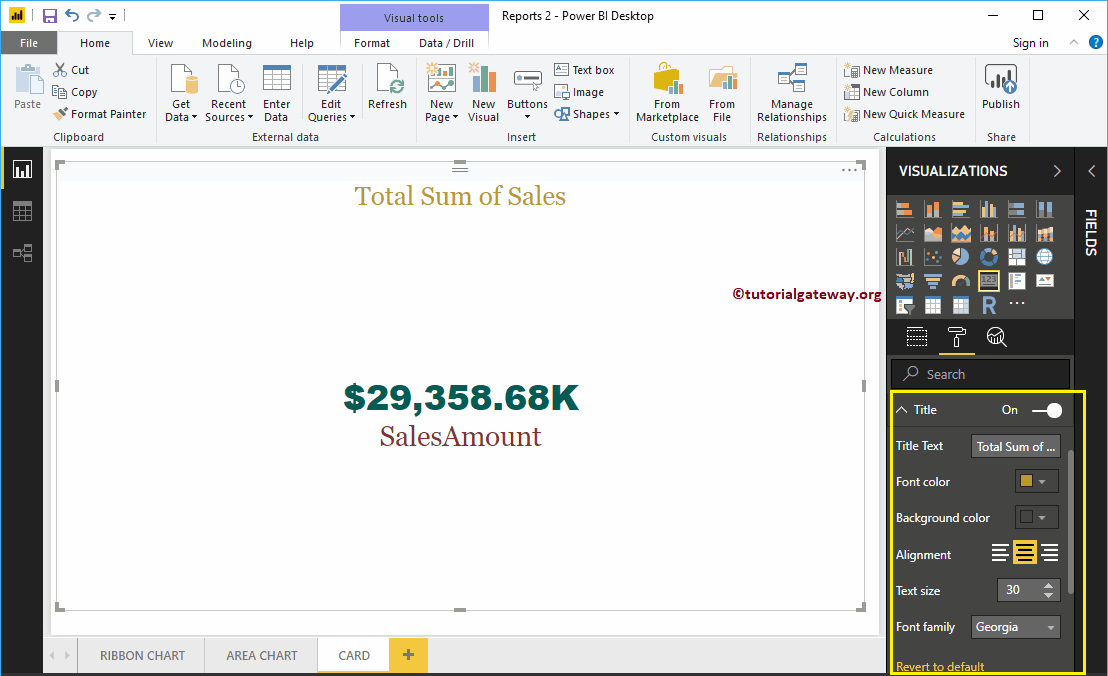
Format Power BI Card Background Color
You can add the Background color to a Card by toggling Background option to On. For the Card demonstration purpose, we added some random color with 57% transparency.
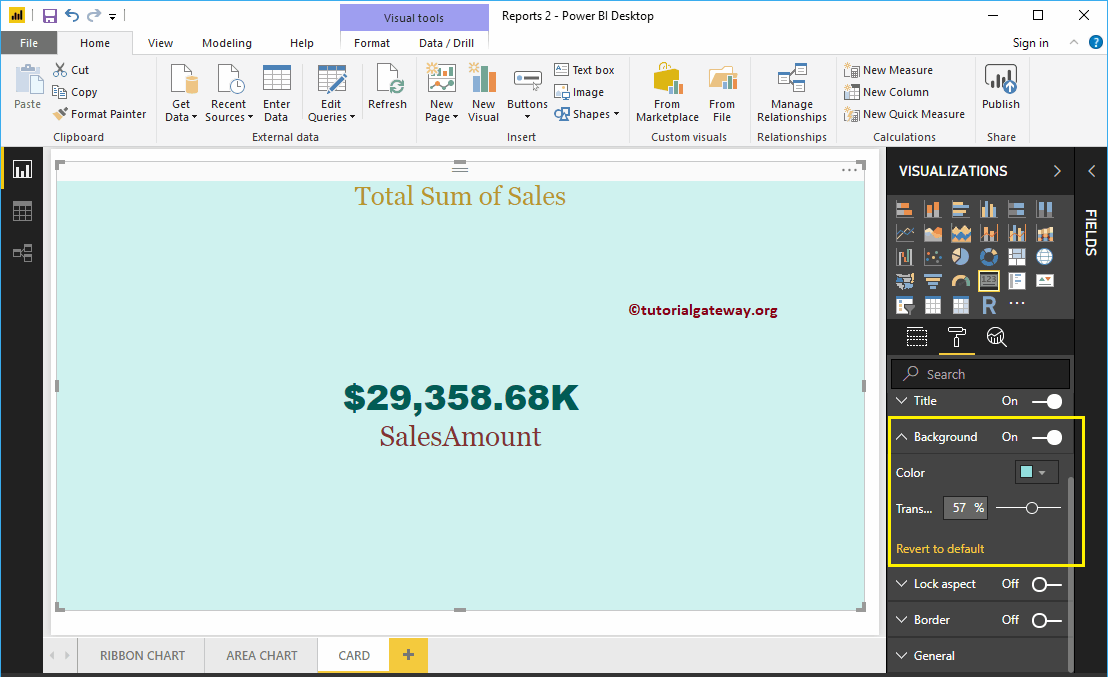
Format Card Borders and General Settings
You can add Borders to a Card by toggling the Border option from Off to On.
Use the General Section to Change the X, Y position, Width, and height of a Card
